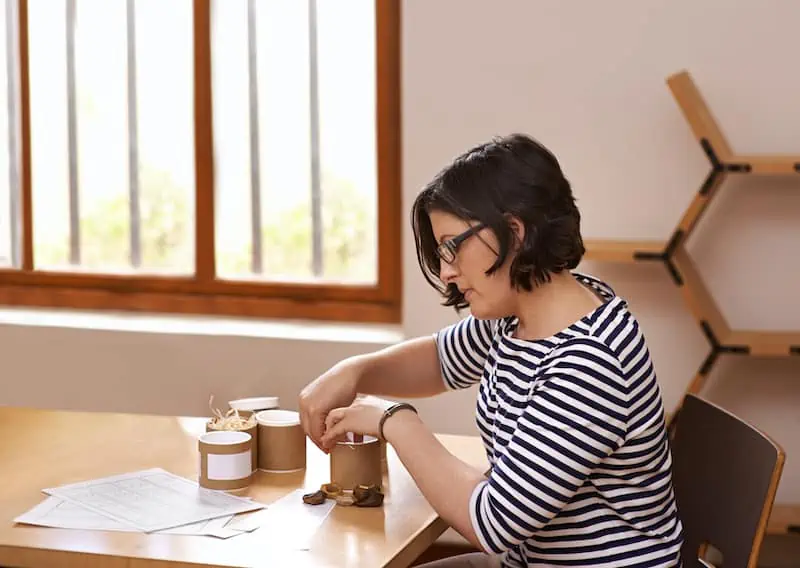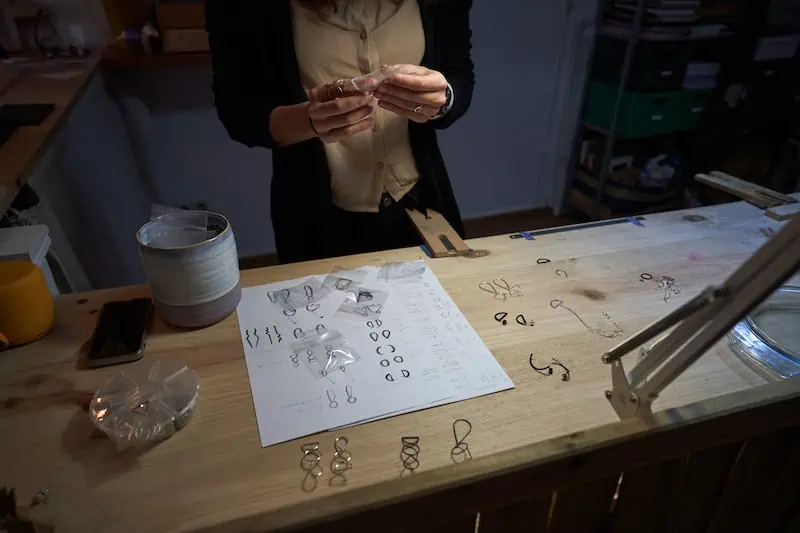If you have a lot of necklaces, rings, bracelets, and earrings, learning how to pack jewelry for a move should be high on your to-do list. Though most jewelry is relatively small, it can often be sentimental, expensive, and delicate. Losing a single earring means not having a matching pair, and loose necklaces can quickly become a knotted mess.
We know that the last thing you want is to lose a piece, leave your necklaces tangled beyond wear, or have something get damaged. We also understand that packing it securely isn’t always as simple as it seems. After helping countless people move over the years, we’ve picked up the secrets the pros use to secure jewelry for moves, and we’re here to share them with you. By following these packing tips for jewelry, you can keep your collection safe from point A to point B.
Supplies Needed to Pack Jewelry Safely
There’s a lot of overlap between general packing supplies and what you need to pack your jewelry safely, so you likely already have most of the supplies you’ll need on hand. If you don’t, you can always pick it up from most major retailers, like Target and Walmart, or online. Here’s a comprehensive list of what you’ll need:
- Tissue paper: Tissue paper helps keep delicate items separate and prevents tangling — but make sure it’s acid-free!
- Bubble wrap: This keeps delicate pieces protected by preventing them from bumping into or scraping against each other.
- Containers: A jewelry box or jewelry organizer is ideal, but a small cardboard box will also work if you take steps to minimize movement during transportation.
- Ziploc bags: Small bags can help separate your pieces and keep them in sets.
- Cardboard or foam: You can poke your earrings into these materials to keep them in pairs.
- Drinking straws: Drinking straws are one of the best ways to keep delicate chains straight and tangle-free in transit.
- Plastic wrap: Wrapping your pieces in plastic keeps them from moving, minimizing the risk of lost items, tangling, or damage.
- Packing tape: Perfect for securing your container. Just don’t use packing tape directly on your jewelry to prevent residue or damage.
Step-by-Step Guide for Packing Jewelry
Learning how to transport jewelry is the best way to protect your collection during a move. It might take a little extra time to secure each piece, but the peace of mind is worth it. Just follow this simple 4-step guide to ensure all your jewelry pieces make it to your new place safe and sound.
1. Clean and Catalog Your Collection
Get everything ready to move before packing. Now’s the perfect time to remove any built-up oils or dust, especially since you’ll be taking photos of everything. Clean according to your jeweler’s recommendations. Generally, you should use a jewelry cleaning solution designed for precious metals and gemstones. Less expensive or costume jewelry can often be cleaned with dish soap and a microfiber towel.
With everything sparkling, start cataloging your collection. This is often best done in a spreadsheet or inventory app. Include key information such as:
- Type
- Designer or jeweler
- Value
- Description
- Receipt
- A photo of the item
Any expensive items should have receipts. If you no longer have them, get an appraisal done so you have a proven dollar value for the item.
2. Secure Jewelry for Packing and Transportation
There’s no one-size-fits-all solution for packing jewelry, as items can vary in size, shape, and material. But no matter what you’re packing, focus on minimizing movement as much as possible. This is especially important for chains or dangly earrings, since excessive movement can result in tangling or damage. Here are some packing methods for common types of jewelry:
Securing earrings
- Keep earrings in pairs and store them in their original cases. If you don’t have the cases anymore, consider using a small piece of cardboard or foam to secure them.
- Push the prongs through a piece of cardboard or foam.
- Wrap them with a layer of tissue paper. If they’re large or particularly dangly, ensure they’re straight and flat before wrapping.
- Secure the wrapping with a small piece of tape.
If you’re not using a jewelry box, place plastic wrap or bubble wrap over the tissue-covered earrings for extra cushion in case pieces shift around in transit.
“Don’t leave expensive jewelry in a storage unit! See if a local jeweler will store it temporarily or rent a safe deposit box.”
Secure the wrapping with a small piece of tape, then place the pieces in a small Ziploc bag. This keeps everything separate once you put it into a box or container.
Securing necklaces and chain bracelets
- Unfasten the clasp.
- Thread half of the chain through a disposable drinking straw approximately half the chain’s length. If the straw is too long, trim it.
- Clasp the chain back together. This should keep the piece taut enough that it won’t tangle in transit.
- Wrap the secured chain in tissue paper, then tape it in place.
Securing rings, bangle bracelets, and other rigid jewelry
- Wrap the piece in tissue paper and secure it with tape.
- If you won’t be using a jewelry box or organizer, consider a layer of bubble wrap for extra protection.
- Place each piece into an individual Ziploc bag and seal it. This makes it less likely that you’ll lose track of an item.
3. Place your Jewelry in a Container

Ziploc bags and individual jewelry cases also work well, but you’ll need a box to store them all. If you have the original cases for your pieces, use them. If not, consider buying cases for your most important pieces.
If you have pieces you’re not particularly worried about, like inexpensive studs or rings, you can use a pill box. However, because they allow for movement, there is a slightly higher risk of damage from pieces rubbing against each other or getting tangled.
4. Consider Extra Insurance
There’s always a risk of damage, loss, or theft when moving. While professional moving services must provide basic insurance, this rarely covers the actual value of items. Additional insurance policies can bridge that gap to ensure your precious pieces have full coverage.
“…[N]o matter what you’re packing, focus on minimizing movement as much as possible. This is especially important for chains or dangly earrings, since excessive movement can result in tangling or damage.”
Before buying extra insurance, check your renter’s or homeowner’s insurance policy — it may already include some coverage for these valuables. If that’s not enough to cover your collection’s value or cover it for your entire move, your moving company might offer a more comprehensive insurance policy.
If moving insurance still doesn’t cover the full value of your items, consider a personal articles policy with your primary insurance provider. However, you’ll pay an annual premium (usually between 1% and 3% of the insured items’ value) for this coverage.
Learn more on our How to Pack Hub.
Frequently Asked Questions About Moving Jewelry Answered
Should I let my movers take my jewelry or move it myself?
Ideally, you should move your jewelry yourself. Jewelry collections don’t typically take up a lot of space, but they can be worth a lot or hold special sentimental value. Moving it yourself is the best way to ensure your collection arrives intact.
With that said, you shouldn’t have an issue letting your movers take it if you’ve selected a reputable moving company. If you plan to have your movers handle your jewelry, speak with the company in advance to learn about their policies regarding loss, theft, or damage.
Should my jewelry box be labeled?
While it’s generally recommended to label everything when moving, jewelry is an exception to the rule. Doing so makes it an easy target since everyone will know what’s in that box and how valuable it could be. Label it fragile or include a “this side up” message on the box if necessary.
What if I need to store my jewelry temporarily during a move?
Don’t leave expensive jewelry in a storage unit! See if a local jeweler will store it temporarily or rent a safe deposit box. If that fails, consider leaving your jewelry with a trusted friend or family member until you’re ready to take it home.



